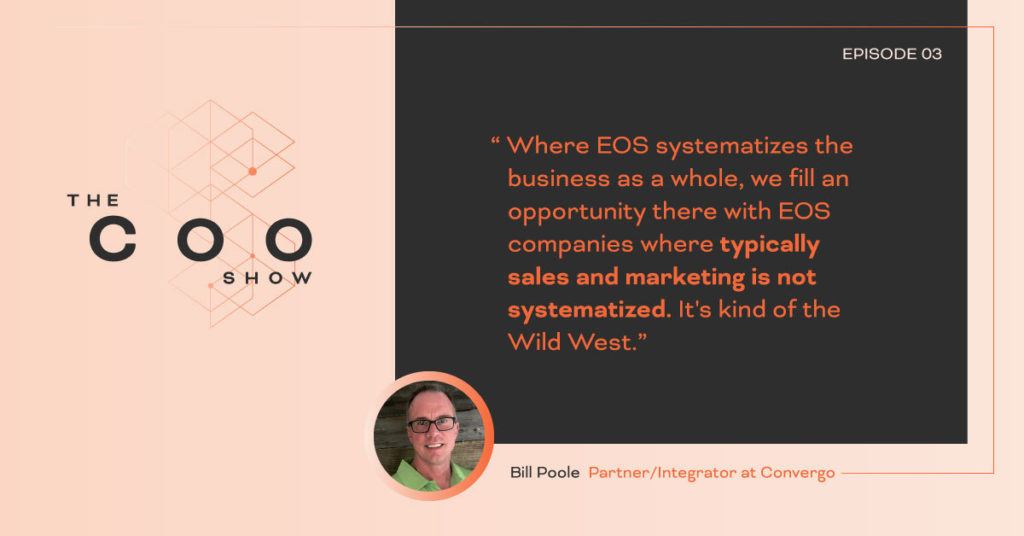![[Podcast] Systematizing Sales & Marketing w/ EOS® Strategies](https://www.convergo.co/wp-content/uploads/2022/06/jonathan-velasquez-c1ZN57GfDB0-unsplash-1080x675.jpg)
by Bill Poole | Jun 15, 2022 | Strategy
Bill Poole was a guest on The COO Show where he chatted with host Bill Reed about why there may be silos in your organization and how to integrate your teams to drive revenue growth. They also talked about how important change management is for creating lasting change and happier employees. Listen to the episode below!

Read the article here.

by Bill Poole | May 31, 2022 | Strategy
What if the way we think about Buyer’s Journey is upside down?
Smart marketing and sales teams collaborate to map out the buyer’s journey, thinking about how they can provide the right information to buyers at the right time during their decision making process. While this sounds helpful, I see a few problems:
First, the Buyer’s Journey is anything but linear. In most cases, it looks more like a cloud of dust than a straight line. Trying to determine where a buyer is in this process feels futile, yet sales and marketing teams try to plot this out. It’s no wonder that most Buyer’s Journey maps get created and then rarely used.
Second, and perhaps most importantly, buyers buy based on emotion more than fact. Harvard professor emeritus and author of How Customer’s Think, Gerald Zaltman, shares research that validates what I’ve learned in every sales training over the past three decades of my career: “Emotion is what really drives the purchasing behaviors, and also, decision making in general.” He found that 95% of purchasing decisions are subconscious [Source].
In his book, The Perfect Plan, Don Barden cites data that buyers only remember a tiny fraction of the knowledge you share with them. They all remember how you make them feel. In essence, the buying process should be designed less to make the buyer an expert in your area of speciality, and more to make them feel comfortable that you can help them achieve results.
On the other side of the buying process, we have this thing called Customer Experience. Once a new customer signs the order, the CX team kicks into action. Smart companies look at the experience across the customer lifecycle, strategically building emotions that sustain loyalty.
An entire genre of work around CX exists in the operations and customer success world by authors like Joseph Pine, James Gilmore, and Joey Coleman to name a few. Most of this research has yet to make its way into net-new sales and marketing.
Buyers buy based on emotion. They use facts to feel confident (emotion) and reduce fear (emotion) about their decision.
Based on this line of thinking, here are a few questions:
- Since buyers buy off emotion, what if we took the lessons of Customer Experience and applied them to the Buyer’s Journey?
- What if the buyer’s journey was as focused on how we made the members of the buying team feel rather than just trying to arm them with knowledge?
- How could this transform marketing and sales?
- How could marketing and sales cooperate to create a memorable and meaningful Buyer’s Experience?
- What if we replaced the term Buyer’s Journey with Buyer’s Experience?
Originally published on Darrell Amy’s LinkedIn.

by Bill Poole | Apr 18, 2022 | Strategy
The past two years have been incredibly challenging. Hats off to all of the teams that have pivoted, re-pivoted, and adapted to survive the COVID-19 pandemic. To say it has been incredibly challenging is an understatement.
As we emerge from the pandemic, we find ourselves in the midst of new challenges. Global instability, energy costs, and rising interest rates all lead to inflation. The supply chain crisis continues to pose problems. The tight labor force and high turnover definitely makes things hard. As usual, there are many business issues to address.
Here is what I see as the problem. The shocking nature of the pandemic with all of its unknowns, lockdowns, and related fear put most companies in survival mode.
Teams focused on how to keep customers rather than go for new ones. This made sense. In some companies, it even caused them to realize that they need to take better care of their clients. However, many of the plans for growth were scuttled in favor of survival.
We cannot stay in survival mode forever.
The temptation in this current economic environment is to stay in survival mode. After all, things are hard.
“Grow or die” is a core value of EOS Worldwide. I love this! (I’m looking forward to presenting at their conference next week in Orlando!) There is a lot of truth to this. Companies that are not growing are dying.
We must continue to grow. We must get out of survival mode.
How can we shift from survival mode back to growth mode?
Recast Growth Goals
Are your revenue growth goals grounded in reality? My experience is that most companies set goals in one of two ways. Neither are helpful.
First, there is the all-too-common spaghetti-on-the-wall method. “What do you think we can do?” Of course, visionaries like me throw the spaghetti high up the wall. More conservative integrators like to throw the spaghetti right above the baseboard. Somehow we compromise in the middle. The problem is that the goal is not realistic.
Others set goals based on the ruler method, lining up the growth trend over the past few years. The problem is that the past few years have been anything but normal.
Instead, I recommend setting growth goals based on the two drivers of growth: Net-New and Cross-Sell. For net-new, the metric is how many customers we have. The goal is how many customers could we add. For cross-sell, the metric is our current revenue per client? The goal is how much could we increase the revenue per client with the right plan and playbooks in place? Multiply your number of clients goal by your revenue per client goal and you have what I call an ABR (Aggressive But Realistic) revenue goal.

Reconsider Customer Expectations
As the business environment shifts, customer expectations have shifted. What delighted customers in 2019 may not work as well in 2022. “But Darrell,” you say, “We are still committed to the same values and excellent customer service.” Sure, but the way those values and service expectations are delivered to your customers may need to shift.
Looking at your customer experience can help. How can you see the needs of your customers through their eyes? If you did, what would need to change?
During Revenue Growth Workshops we map out the Ideal Client Experience. Marketing, sales, and operations get on the same page with what happens from the time a prospect first encounters the company all the way through their experience as a client. This exercise is very helpful to do in light of new expectations and hybrid work environments.
Recreate Your Plan
With your goals and client experience in mind it’s time to create a plan. This plan needs to align marketing, sales, and operations around your growth goals. What needs to be optimized? What’s missing? How can you do things to account for your current work structure and your clients’ expectations?
Revisit Your Playbooks
I love going to my granddaughter’s sports games. Both of them are under the age of 10 and relatively new to team sports. Whether they are playing basketball or soccer, they have one thing in common. The entire team runs to the ball. A giant horde of kids surround the ball. This amorphous mass of humanity suffocates the game. There is no way to pass the ball. As a result, the score is usually very low.
What’s wrong with this picture? While we of course give grace to these cute kids, the reality is that they don’t have a playbook. Everyone is just doing their own thing. The result is chaos.
What about your marketing, sales, and operations team? Do they have a playbook?
If you have revenue playbooks, it’s time to revisit them in light of the new environment. If you don’t have revenue playbooks, its time to create them!
A revenue playbook ensures that marketing, sales, and operations are working in concert to maximize both net-new and cross-sell revenue. Revenue playbooks give everyone a clear understanding of the ideal clients, personas, client experience, and processes. The include tools and content.
The result of a playbook is consistency.

by Bill Poole | Mar 23, 2022 | Strategy
Series: How To Make Revenue Growth Predictable In Uncertain Times
Part 1
Part 2 (this article)
Part 3
Over the past few years business leaders have become familiar with uncertainty. In the midst of pandemic pivots, supply-chain shifts, and hiring hassles, one thing has remained constant: the need for revenue.
Revenue is the lifeblood of business. We have proven our ability to solve all kinds of problems, but revenue problems are a massive change. Some of the biggest problems happen when uncertainty leads to unpredictable revenue. Thus, it is important to take smart actions to ensure revenue growth remains predictable, especially in uncertain times.
This is the second in a series of three articles offering strategies to make revenue growth predictable. Previously we explored the importance of Focusing Your Message. In this article we will unpack the second strategy: aligning marketing, sales, and operations around your Client Experience.
(In this article, I will use the words client and customer interchangeably. Some industries have customers while others have clients. Personally, I like the word client, even in an industry that traditionally uses the word customer because the world client infers a relationship of trust.)
What Is Client Experience?
Client Experience is the sum total of the impressions and feelings your prospects and clients have as they interact with your company.
My first employer, Lanier Worldwide, had a great company tagline, Customer Vision. They defined it as follows: “We strive to see your business and your needs through your eyes.” This is the mindset of Client Experience.
Marketing, sales, and operations teams tend to look at things through their own lenses. Marketing sees audiences, funnels, and leads. Sales sees activity, pipeline, and deals. Operations sees processes, support desks, and NPS (Net Promoter Score) rankings. It’s no wonder that these teams have trouble communicating, even in small companies that aren’t supposed to have silos.
A Client Experience perspective allows marketing, sales, and operations to look through the same lens. Seeing through the eyes of the customer (and prospective customer) they are able to understand what it might be like to interact with the company.
From this perspective, each team can then begin to think how they can enhance the entire experience. From there, playbooks can be created that orchestrate an amazing experience as marketing, sales, and operations work together to serve prospects and clients.
How Does Client Experience Help Make Revenue Predictable?
Improving Customer Experience leads to more predictable revenue in the following ways.
1. Maximize Cross-Sell Revenue
There are only two ways to grow revenue: grow net-new business by adding new customers or cross-sell more to your existing customers. For most companies the low-hanging fruit is in the cross-sell revenue.
Sadly, most companies fail to maximize their cross-sell revenue. Sales and marketing are focused on driving net-new. Once a customer comes on board they get handed off to operations or customer success. At that point, the marketing and selling stops. Marketing and sales move on to the next deal. Meanwhile, your base of clients desire multiple outcomes that your company could satisfy—if only they knew.
Looking at your Customer Experience shines a bright light on the areas where you could incorporate cross-sell strategies. Companies that get smart and consistent about about cross-sell build processes and playbooks to ensure they maximize their revenue-per-client.

2. Increase Client Retention
Employee turnover is a huge challenge. Client turnover is a problem as well. If you bring on 100 clients and lose 80, you are only up 20 clients. Even worse, you lost the potential to cross-sell to the 80 you lost. Focusing on Client Experience ensures that you minimize turnover, creating sustainable revenue.
3. Improve Customer Service
When everyone at your company understands the stages of the Customer Experience it begins to empower them to deliver better customer service. Without an understanding of the entire journey a prospect and customer have taken, individual employees are only making guesses about what they need to do. Good intentions may lead to actions that actually harm your Customer Experience. By mapping the entire experience and seeing it through the eyes of the customer you can come up with ways to improve your customer service.
4. Get More Referrals
Happy clients lead to referrals. Every sales rep knows that referrals have a high probability of closing. When you craft an engaging Customer Experience, you ensure that your sales team interacts with the customer after the initial sale. These interactions create the opportunity to ask for referrals.
5. Streamline Onboarding
We’ve all felt the cringe factor of a new employee interacting with a customer in a way that is counterproductive. Of course, we coach the employee to improve. Instead, what if new employees were able to see the entire Customer Experience through the eyes of an actual customer? They could review playbooks for each stage of the experience that explained the goals of the stage, the processes, the resources, and how their role fit into the overall experience. Mapping Customer Experience and then creating playbooks helps new team members feel comfortable in their role and assists them in getting up to speed as quickly as possible.
6. Allow Adaptability
Pivot could easily have been the word of the year for 2020. Companies that were able to adapt during the turbulent times of the pandemic were able to survive and thrive. When you have mapped out your Customer Experience you are able to adjust when the market shifts. These adjustments can be incorporated into modified playbooks when then filter down through your team. The end result is faster pivots.
All of these factors work together to to make revenue more predictable. During uncertain times this predictability is more important than ever.
Continue reading part 3 in the series of How to Make Revenue Predictable in Uncertain Times.

by Bill Poole | Mar 14, 2022 | Sales, Strategy
Recently I talked with a business owner who had put all of their lead development into one particular source. Leads were streaming in—until the platform changed their rules. When that happened, new business came to a grinding halt. It took many months to ramp up a new strategy and the business suffered.
A strategy of leaning heavily into one source of leads is like buying stock in one company and putting all of your assets into that stock. No smart investor would do this. Yet, when it comes to leads for net-new business, this is exactly what many business leaders do.
Smart investors diversify their holdings, owning a mix of various types of assets. If circumstances cause the asset type to underperform the hope is that the others will pick up the slack.
Smart business leaders diversify their sources of net-new business. This ensures that if one lead source stops performing, others can pick up the slack.
At Convergo, we refer to sources of leads as Lead Channels. Think of multiple streams feeding into a river. If one stream dries up, the river still is fed from other streams.
The Lead Channel analogy is similar to the distribution model of many technology companies. A computer manufacturer typically has multiple channels including their direct sales team, channel partners, and retail. Inside each of these channels they have multiple types of channel partners and retailers. This diversification helps ensure consistent revenue.
What Are Lead Channels?
Lead channels are the sources of net-new opportunities for your business. Here are a few common lead channels to get you thinking:
Inbound Marketing
- Digital Advertising
- Organic Search Engine Placement
- Social Media
- Traditional Advertising
- Public Relations
- Events
- Podcasts
Direct Marketing
Outbound Selling
- Prospecting Sequences with Email, Phone, and Social
- Social Networking
- Lead Sharing Groups
Smart companies have a mix of lead channels.
If one of these works well, great! However, it is unwise to put all of your eggs in one basket, as they say. Smart companies diversify their Lead Channels.
What Keeps Companies From Diversifying?
Why do companies get stuck in the trap of one Lead Channel? Here are the two most common reasons I see.
The High-Performer
We have a tendency to double-down on high performing Lead Channels. If there is a particular strategy that works well for you, great! Just like you might want to put more of your investment portfolio into a high-performing stock class, it is smart to put more focus on a high-performing Lead Channel. The important thing is to not put all of your focus in this area. Sure, it is performing well right now, but that may not continue forever. Beware of the shiny object that takes your eyes of a diversified lead generation strategy!
Short-Term Thinking
Some Lead Channels take longer to develop than others. For example, a pay-per-click digital ad strategy might yield faster results than building organic placement in search engines or executing a social media strategy. Short-term thinking says, let’s go all-in on paid ads and forget about the long play. This mindset could keep you from enjoying the long-term fruit of an effective search engine and social strategy.
The Way We’ve Always Done It Around Here
For my friends in sales, “the way we’ve always done it” is a common reason to not diversify lead channels. I began my sales career 30 years ago in an industry that was all-in on face-to-face cold calling. We literally went door-to-door grabbing doorknobs, asking for decision makers, and collecting phone numbers to fuel phone prospecting later in the day. While this strategy worked well back in the day, over the past three decades many other potential lead channels have emerged with the maturity of the internet and mobile. Yet many companies in this industry still focus exclusively on field cold calls, refusing to diversify their Lead Channels.
Other industries have traditionally used billboards or TV advertising. Fantastic. However, billboards now exist in the form of digital advertising. TV advertising doesn’t just happen on NBC, ABC, CBS, and FOX. It also happens in a highly-targeted way on YouTube.
What You Can Do To Diversify
Whether you are enamored with a high-performer, trapped in short term thinking, or stuck in the way you’ve always done things, here are some steps you can take to diversify your Lead Channels.
Be Open-Minded
First, be open to new ideas. Experiment with new Lead Sources. Keep doing what’s working, but allocate some budget and attention to new things. A trustworthy sign that you might not be open-minded are the words, “Our prospects and clients would never…” Are you sure? We heard this a lot years ago about social media. Yet even my retired mom regularly visits Facebook and runs and Etsy store that gets leads through Google. Be open-minded.
Be Strategic
As you are being open-minded, don’t just jump on the next trend. Consider your Ideal Clients. Where do they spend their time? What outcomes are they looking for? What would be the best forum to engage in discussions? Use this to guide your diversification strategy.
For example, if your Ideal Client is a plant manager at a manufacturer, continue your sales prospecting efforts but consider how you might engage in additional strategies such as creating a podcast for plant managers, creating a group of similar companies that sell to plant managers, or doing digital marketing to a target audience of plant managers.
Strategy also means making some decisions that may not always look good on paper. For example, you might decide the get engaged as a sponsor for a conference or industry trade show. The cost-per-lead may be high, but the strategic benefits of exposure as a leader in your industry might need to be factored into that cost as well.
Be Smart
Track your Lead Channels. Where are new leads coming from? Which channels are performing well? For the ones that are underperforming, is there a long-term plan in play? If so, keep investing. If not, reallocate your dollars. For each Lead Channel, look at the revenue that came from that channel and determine the revenue that resulted and the cost-per-lead.
Diversifying your lead channels takes work. In today’s rapidly changing marketplace, this work will pay off. While your competitors are left scrambling and trying to pivot, you’ll keep moving forward.

by Bill Poole | Mar 8, 2022 | Marketing, Strategy
Originally posted by Forbes
Growth Architect and author of Revenue Growth Engine, helping companies align sales and marketing to grow revenue faster.
When times get tough, it can be tempting to look for revenue anywhere you can find it. As one of my first sales managers used to say, “If they can fog a mirror and sign an order, we’ll take it.”
The reality is that not all revenue is created equal. And, as I say in my own business, “Not all clients are created equally.” There are some clients who provide more value than others. In this current environment, it is more important than ever to focus on “ideal clients.”
What is an ideal client? These are clients who need everything you sell. They have value because they are candidates for all of your products and/or services. They have to fit because they align with your culture. Ideal clients are especially important when:
You have limited marketing and sales resources.
Unless you are a major company, chances are you have limited sales and marketing resources. If you try to market and sell to everyone, you will end up reaching no one. Understanding your ideal client profile allows you to focus your business development efforts on a specific group of prospects. You might tell your sales team, “You can sell to anyone, but 100% of the time you will call on these ideal prospects.”
With ideal clients, business development also takes on an additional dimension. Since these clients need everything you offer, the marketing and selling don’t stop when the first order comes in. In fact, selling and marketing begin with the first order. Focusing your business on ideal clients allows you to direct marketing and sales resources to harvest the additional revenue opportunities in these accounts.
You have limited operational resources.
The combination of the current supply chain crisis and the tight labor market clearly demonstrate that even the best companies have limited operational resources. In this environment where we are acutely aware of limitations, it makes sense to focus resources on serving the type of clients who have the most revenue potential.
The old adage, “The squeaky wheel gets the grease,” tends to be true in daily operations. The reality is that many of the squeaky wheels tend to be nonideal clients. As a result, many times it’s your nonideal clients who end up getting most of your team’s effort. At the same time, morale suffers. Resources get diverted away from ideal clients and you miss the opportunity to maximize revenue and retention of ideal clients.
In the book At Your Best, author Carey Nieuwhof explained how leaders can fall into the trap of spending their best time on fire drills and challenging employees rather than proactively investing in their top leaders. But we need to intentionally schedule time with our top leaders because this is what will drive the organization forward.
Similarly, it can be easy to let the team’s resources get diverted toward challenging clients who are not ideal for your business, thus causing you to neglect ideal clients. But your ideal clients are ideal because they are likely easy to work with. That means you need to intentionally invest time and resources in them, even if they are not being the squeaky wheel.
You have limited financial resources.
Revenue is the lifeblood of business. I conduct revenue growth workshops with businesses across multiple industries, and I have consistently seen that ideal clients have significantly more revenue potential. Plus, ideal clients will be those customers who are more loyal, value what you do for them and see you as less of a vendor and more of a partner. That means they have a much greater chance of sticking around. If you need more revenue, I believe ideal clients provide the most sustainable path. Since they value what you do, they tend to pose fewer problems.
Focus on ideal clients.
Now, more than ever, smart businesses focus on ideal clients. This begins by understanding your ideal client profile. Next, identify the current and prospective clients who fit the profile. This allows you to focus your sales, marketing and operations efforts around attracting ideal clients and cross-selling all of your products and services to them to maximize revenue potential.

![[Podcast] Systematizing Sales & Marketing w/ EOS® Strategies](https://www.convergo.co/wp-content/uploads/2022/06/jonathan-velasquez-c1ZN57GfDB0-unsplash-1080x675.jpg)









